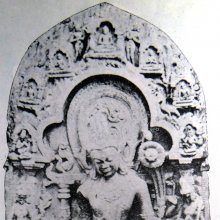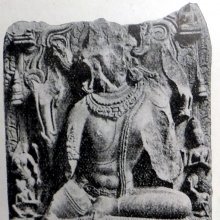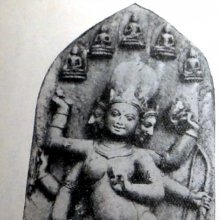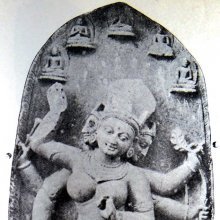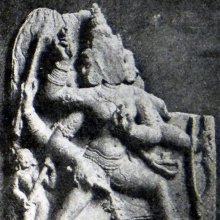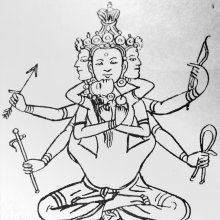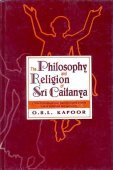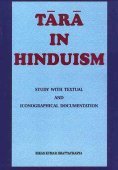Bengal, Bemgal: 2 definitions
Introduction:
Bengal means something in the history of ancient India. If you want to know the exact meaning, history, etymology or English translation of this term then check out the descriptions on this page. Add your comment or reference to a book if you want to contribute to this summary article.
Images (photo gallery)
(+13 more images available)
India history and geography
Source: Knowledge Traditions & Practices of India: Education: Systems & Practices (history)Bengal.—The Indian education system had such resilience that it continued to function till the pre-colonial age. British administrators documented the wide network of schools and institutions of higher learning in various parts of India. These records reveal that in Bengal and Bihar alone, indigenous village schools numbered between 100,000 to 150,000.

The history of India traces the identification of countries, villages, towns and other regions of India, as well as mythology, zoology, royal dynasties, rulers, tribes, local festivities and traditions and regional languages. Ancient India enjoyed religious freedom and encourages the path of Dharma, a concept common to Buddhism, Hinduism, and Jainism.
Languages of India and abroad
Kannada-English dictionary
Source: Alar: Kannada-English corpusBeṃgal (ಬೆಂಗಲ್):—[noun] = ಬೆಂಗದಿರುಗಲ್ [bemgadirugal].
--- OR ---
Beṃgāl (ಬೆಂಗಾಲ್):—[noun] the back part of the (huyman) foot.
Kannada is a Dravidian language (as opposed to the Indo-European language family) mainly spoken in the southwestern region of India.
See also (Relevant definitions)
Starts with: Bemgala, Bemgalli, Bemgalu, Bemgaluru, Bengal cardamom, Bengal clock vine, Bengal currant, Bengal currants, Bengal ginger, Bengal gram, Bengal grass, Bengal indigo, Bengal kino, Bengal madder, Bengal quince, Bengal trumpet, Bengal wild rice, Bengali.
Full-text (+1546): Vanga, Gauda, Nakula, Manjishtha, Kamarupa, Pundra, Paundra, Gandhanakula, Bangali, Mungusa, Manjetthi, Yojanaparni, Raktayashti, Varendri, Jinghi, Atisamya, Kuladipika, Godavari, Vikasa, Ladu.
Relevant text
Search found 167 books and stories containing Bengal, Bemgal, Beṃgal, Beṃgāl, Beṅgal, Beṅgāl, Bengāl; (plurals include: Bengals, Bemgals, Beṃgals, Beṃgāls, Beṅgals, Beṅgāls, Bengāls). You can also click to the full overview containing English textual excerpts. Below are direct links for the most relevant articles:
Partition and The Bengali Language < [March 1949]
India and Pakistan: The Cultural Crisis < [January 1951]
Our Freedom and the Future < [January 1953]
Puranic encyclopaedia (by Vettam Mani)
Jain Remains of Ancient Bengal (by Shubha Majumder)
Researches on Jainism in Ancient Bengal < [Chapter 1 - Introduction and Scope of the Present Study]
General Introduction < [Chapter 2 - Geographical Setting of the Study Area]
Jainism in Ancient Bengal < [Chapter 3 - Historical Background of Jainism in Ancient Bengal]
Chaitanya Bhagavata (by Bhumipati Dāsa)
Verse 1.14.49 < [Chapter 14 - The Lord’s Travel to East Bengal and the Disappearance of Lakṣmīpriyā]
Verse 1.1.90-91 < [Chapter 1 - Summary of Lord Gaura’s Pastimes]
Verse 1.14.66-67 < [Chapter 14 - The Lord’s Travel to East Bengal and the Disappearance of Lakṣmīpriyā]
Dipavamsa (study) (by Sibani Barman)
The history of Andhra country (1000 AD - 1500 AD) (by Yashoda Devi)
Part 15 - Choda II (A.D. 1350) < [Chapter II - The Haihayas]
Part 34 - Rajaraja I (A.D. 1200-1273) < [Chapter XI - The Chalukyas]
Part 6 - Arjuna II alias Virarjuna (A.D. 1356-1399) < [Chapter XIII - The Dynasties in South Kalinga]
Related products
(+2 more products available)
